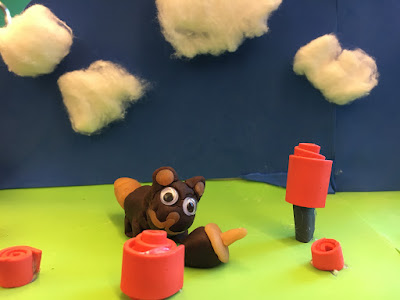We have just completed our Simple Machine and Engineering Unit and wow! was it fun!
In this unit we focused on How simple machines can make a task easier?
However, to understand the HOW, we needed to understand the basics of simple machines and be able to:
1.1 Identify materials used to accomplish a design task based on a specific property, e.g., strength, hardness, and flexibility.
| |||
1.2 Identify and explain the appropriate materials and tools (e.g., hammer, screwdriver, pliers, tape measure, screws, nails, and other mechanical fasteners) to construct a given prototype safely.
| |||
1.3 Identify and explain the difference between simple and complex machines, e.g., hand can opener that includes multiple gears, wheel, wedge, gear, and lever.
|
Beginning with inclined planes, we constructed paper roller coasters!
One big focus in our design challenges is being able to communicate with our peers. After coming up with our own ideas, the real skill is in being able to listen to each other and collaborate on our work.
To see more check out these videos and photos!

We also learned about levers. Wondering how levers work? Ask us how the placement of a load and fulcrum can make completing a task easier!
Once we had the basics down, it was time to design a catapult for the Catapult Challenge! Again, being able to communicate our ideas was key! So we spent some independent time researching, brainstorming, and designing what we thought would make for a good design! After that, we were assigned to our groups and got to work!
See more here! Catapult Challenge!
To celebrate our learning, we took a trip to the Museum of Science! Thank you to all of the parents who braved the elements to join us on the trip! If you missed it, you can see some of the highlights by clicking on the logo!






















